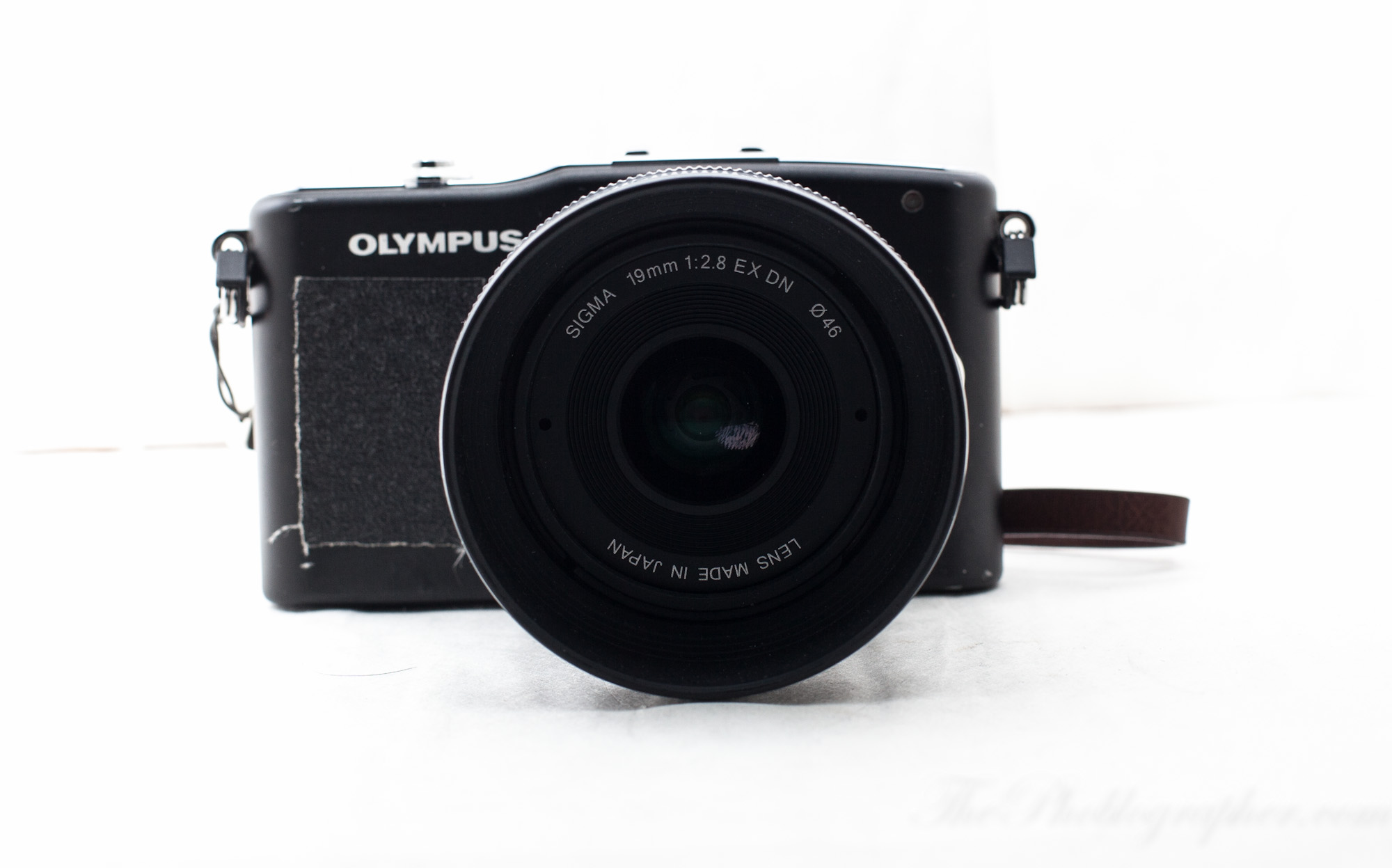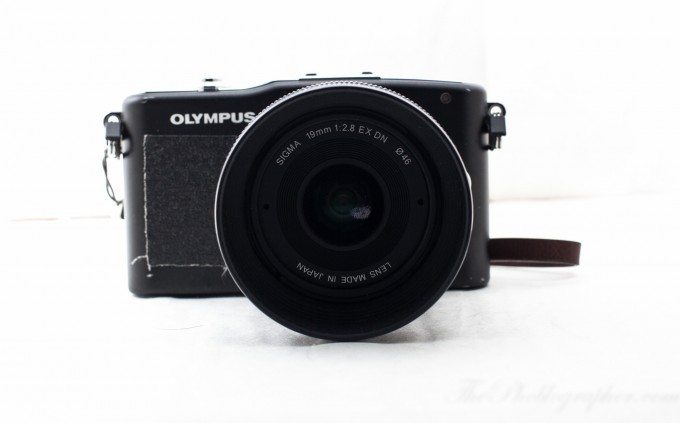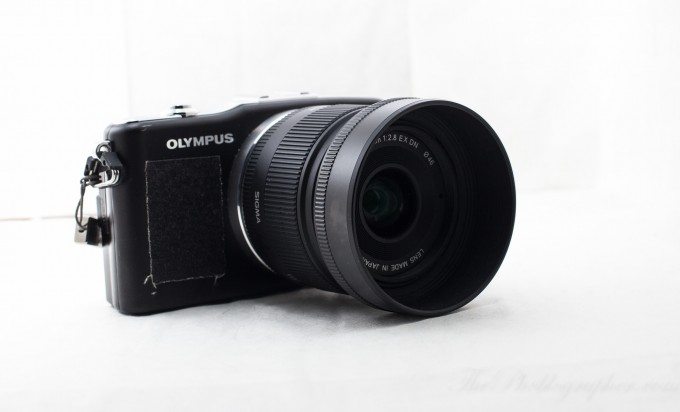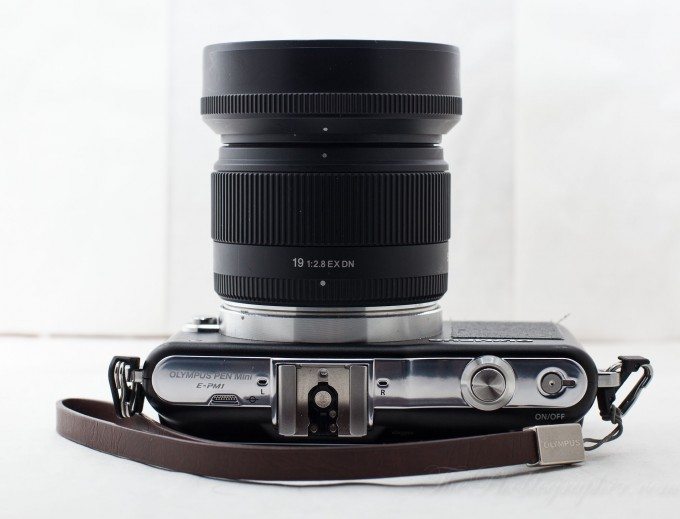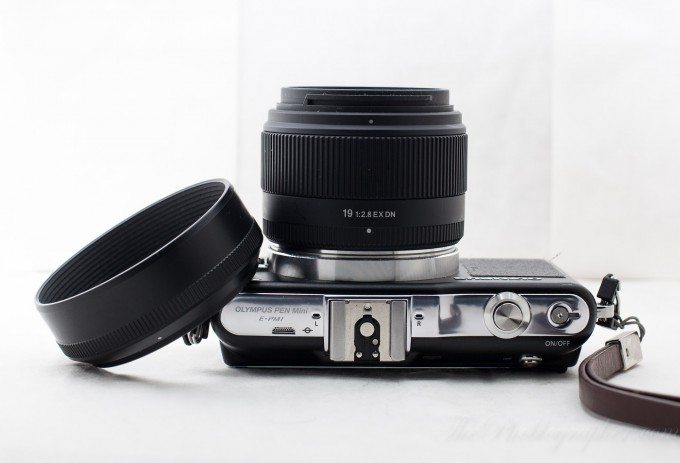Last Updated on 10/28/2012 by Chris Gampat
The Sigma 19mm f2.8 EX is probably one of the most exciting announcements in the Micro Four Thirds community based on the mere importance of it all. It is one of the first autofocus lenses made by a third party company for the system.
I’ve been testing the lens for around a month now, and its use has been one of the most interesting experiences I’ve had as a reviewer. To catch up to speed, check out our hands on review and our preview video.
Editor’s Update 10/28/2012: After using later versions of the lens, I have come to the conclusion that the units I was initially sent were slightly problematic. The lens elements only jiggle a bit because of the autofocus motor and during my review, the elements still jiggled around and the focusing was still a bit problematic after multiple autofocusing attempts. With firmware updates that came after the review was published, the latter problem was fixed. Additionally, the elements aren’t supposed to jiggle when electronic contact is made. After trying later versions of the lenses, this problem has indeed been fixed even after focusing confirmation. Additionally, you shouldn’t be shaking your lens around like a martini shaker to begin with.
Gear Used
Tech Specs
| Performance | |
|---|---|
| Focal Length | 19 mm Comparable Four Thirds and Micro 4/3 Focal Length: 38 mm |
| Aperture | Maximum: f/2.8 Minimum: f/22 |
| Camera Mount Type | Micro Four Thirds |
| Format Compatibility | Micro Four Thirds |
| Angle of View | 73.5° |
| Minimum Focus Distance | 7.87″ (20 cm) |
| Maximum Reproduction Ratio | 1:7.4 |
| Groups/Elements | 6/8 |
| Diaphragm Blades | 7 |
| Features | |
|---|---|
| Image Stabilization | No |
| Autofocus | Yes |
| Tripod Collar | No |
| Physical | |
|---|---|
| Filter Thread | Front: 46 mm |
| Dimensions (DxL) | Approx. 2.4 x 1.8″ (6.10 x 4.57 cm) |
| Weight | 4.9 oz (139 g) |
Demo Video
Mind you, this video was shot a very long time ago when I started the review.
Ergonomics
The Sigma 19mm f2.8 looks and feels like a high end professional lens for the Micro Four Thirds system. Though it isn’t a pancake, it isn’t extremely large either. In fact, much of the extra size is characterized by the removable lens hood.
The lens feels well balanced on any Micro Four Thirds camera and is characterized by a large manual focusing ring. Because the lens is coupled, it will also work with a Micro Four Thirds camera’s ability to automatically magnify a said area when manually focusing.
Otherwise, it is great as purely just a grip.
It must be said though: this lens feels a bit naked and lacking without a lens hood. This goes double for users with larger hands. However, the lack of a hood makes the lens smaller and easier to pocket, even with the hood on reversed.
Nonetheless, this lens’s large size will still not make the package pocketable unless you’re sticking it in a large winter jacket. Otherwise, grab a neck strap for yourself.
Unlike other EX lenses, there is no AF/MF switch on the lens. That needs to be done via the camera’s menu system.
Focusing
Focusing for the most part is fairly snappy, but not as fast as Olympus’s MSC lenses. The 19mm f2.8 focuses very silently as well, which is perfect for when you’re at an event and don’t want to hear an autofocus motor.
To be very honest, this lens may be best paired with cameras like the EP3 and EM5 with their touch to focus/shoot functionality. That will give moms and dads with their brand new baby the best chance they have to capture their running toddler and be able to sharply and accurately get the little tike in focus.
Best of all, the focusing also works splendidly in low light situations even without the need of an AF assist lamp.
Color Rendition
 The Sigma 19mm f2.8 has some excellent and very true to life color rendition when working with the sensors in Olympus cameras.
The Sigma 19mm f2.8 has some excellent and very true to life color rendition when working with the sensors in Olympus cameras.
Though the cameras has ultimately gotten over the entire algorithm of shifting everything toward the blue side of the spectrum in terms of color temperature, this lens still tends to render images more towards the warm to neutral size.
For the most part though, throughout my tests I often found the color rendition to look as good as well developed Kodak Portra; and these goes double for all the of the delicious skin tones that this lens gave me when photographing people: which is really my main subject in photography.
For the photographer that wants a lens that will give you a bit more reach than a 35mm focal length and wants to photograph people (like in street photography) the Sigma 19mm f2.8 EX is a very strong choice for you.
For the person just shooting photos of their family or that doesn’t necessarily want to do a lot of editing to their photos, this lens is also an excellent choice when combined with the fact that it is tack sharp all over. Note that this all depends on your own creative vision though: if you’re at a concert and want to neutralize a photo, then you’ll need to apply your knowledge of color theory to your editing.
As I’ve recommended before, it is a best practice to use the according focusing methods to ensure of this. That is, use tracking focus for moving subjects and single focus for stagnant. Though that seems like common sense, many people don’t do it.
In fact, in the photo in this section, I used single focus but still was able to get a sharp and wonderfully colored photo.
Image Quality
The overall image quality of this lens is terrific and phenomenal in the right hands. The lens takes a lot of careful use in order to create some of the best images that one can. To get the absolute best results in terms of sharpness, don’t focus and recompose because you’ll throw off the entire plane of focus. Only do that when you’re emphasis is more on capturing the scene.
Sigma often brands EX lenses as their top of the line and professional grade lenses. Indeed, the image quality from this lens exceeds those expectations.
The bokeh quality and lens flare control are also quite good (though flare control could be better) and there is no vignetting that I was able to notice. For the absolute best results, I recommend just shooting the lens wide open at f2.8 all day and night. It only becomes marginally sharper at F4 and f5.6.
Here are some other image samples from the lens.
Sharpness
This lens is tack sharp. It rivals even the Olympus 12mm f2 and 45mm f1.8. In all honesty, Sigma nailed it with this one as they have with all of their prime lenses.
Ease of Use
 Some of the ways that I found to use this lens to its ultimate potential was to not always look through the viewfinder/LCD screen. Because it is a 38mm equivalent field of view, you’ll sometimes get lucky just pointing the camera and shooting vs putting lots of careful thought into shooting: which can sometimes turn into too much careful thought.
Some of the ways that I found to use this lens to its ultimate potential was to not always look through the viewfinder/LCD screen. Because it is a 38mm equivalent field of view, you’ll sometimes get lucky just pointing the camera and shooting vs putting lots of careful thought into shooting: which can sometimes turn into too much careful thought.
In fact, I believe that the lens was created for this specific purpose. Why?
– It’s super sharp
– It focuses very quickly
– It has the specific field of view
With all of these factors combined, it is hard to see how this lens cannot be such an excellent performer on your camera.
Even better is the fact that it focuses quickly on both newer micro four thirds cameras and older ones.
Conclusion
Sigma has a very big winner with the 19mm f2.8 EX. In fact, I found myself almost married to it during my review period. I much preferred this field of view vs the 60mm equivalent on the 30mm f2.8.
One major problem with this lens still stands though: during the camera start up period, the fact that this lens is attached will slow down the start up performance. Sometimes, it will take up to four seconds. And that…can be very annoying especially when trying to wake the camera up to catch a candid photo.
There is much to love about this lens: it is sharp, the color rendition is second to none, it focuses quickly, and it is also quite small. Despite the fact that this lens has so many strengths going for it though I have to admit why I didn’t purchase it. I firmly believe that f2.8 is too narrow an aperture for Micro Four thirds cameras. If you’re using an f2.8 lens, you should honestly be shooting with it wide open all day and all night because you’ll effectively always have more than you’ll ever need in focus. Indeed, I sometimes felt like using this lens wide open was like shooting with my 5D Mk II at f5.6. Granted, that is a significantly larger sensor.
If you don’t mind shooting at f2.8, then seriously spring for this lens as soon as you can due to the ultra affordable price. If you need a faster aperture, then be prepared to shell out the money for it.
This lens is available for purchase at Amazon and B&H Photo.


